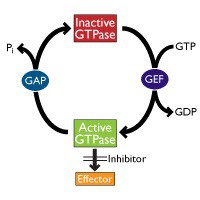Peptide advances in biomedicine
Peptides, which are short chains of amino acids, have gained significant attention in biomedicine due to their diverse applications. Their unique properties, such as high specificity, low toxicity, and excellent biocompatibility, make them valuable tools for various biomedical purposes. Let’s take a look at some applications of peptides in this field.
1. Drug Discovery and Development
Peptides serve as promising candidates for drug discovery due to their ability to interact with specific targets in the body. Peptide-based drugs can be designed to mimic or block the activity of natural proteins, hormones, or enzymes. They have been developed to treat various conditions, including cancer, diabetes, cardiovascular diseases, and autoimmune disorders. Examples of peptide-based drugs include insulin, glucagon-like peptide-1 (GLP-1) analogs for diabetes, and peptide-based anticancer drugs like goserelin and leuprolide.
2. Therapeutic Peptides
Peptides can be used directly as therapeutic agents. Some naturally occurring peptides have inherent therapeutic properties, such as antimicrobial peptides (e.g., colistin and polymyxin) that combat bacterial infections and peptide hormones (e.g., vasopressin and oxytocin) that regulate physiological processes. Animal venoms, for example, are natural sources of biologically active peptides that selectively and specifically act on different cellular targets, modulating physiological functions. Synthetic peptides are also developed for therapeutic purposes, such as peptide-based vaccines for immunization against infectious diseases or cancer. The peptide 4N1Ks, a 10 amino acid peptide derived from TSP1 protein, demonstrated improved senolytic activity when delivered into nanoemulsions to senescent breast cancer cells, compared to the free peptide. (1).
3. Diagnostic Tools
Peptides play a crucial role in diagnostic applications. Peptide-based biomarkers are used to detect and measure specific molecules or pathological conditions in the body. They can be used in various diagnostic techniques, including immunoassays, fluorescence imaging, and biosensors. Peptide-based imaging agents are also employed in molecular imaging techniques like positron emission tomography (PET) and magnetic resonance imaging (MRI) to visualize specific tissues or biomarkers.
4. Targeted Drug Delivery
Peptides can be employed as targeting ligands to deliver drugs specifically to desired sites in the body. By conjugating therapeutic agents to targeting peptides, drug delivery systems can be designed to accumulate in specific tissues, organs, or cells. This approach increases the drug’s efficacy, minimizes off-target effects, and reduces systemic toxicity. One example is the paper published by Bouzo et al. 2021 in which they used biodegradable and biocompatible sphingomyelin nanosystems (SNs) decorated with the UroG peptide as a dual strategy for targeting metastatic colorectal cancer cells and simultaneously treat them in combination with the encapsulated the anticancer drug etoposide (2).
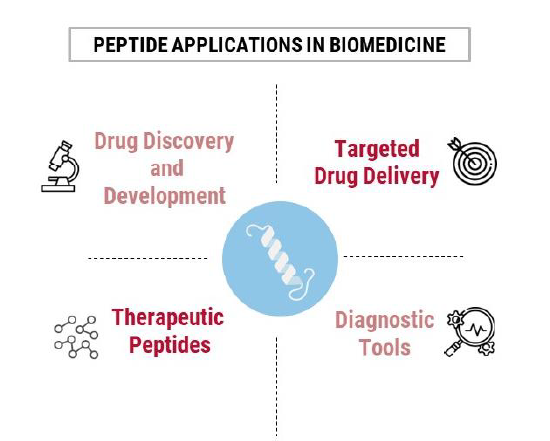
The applications of peptides in biomedicine continue to expand as researchers explore their potential in areas like immunotherapy, gene delivery, wound healing, and more. Peptide engineering and advances in peptide synthesis techniques are expected to further broaden the scope of their biomedical applications in the future. Despite their great potential, their clinical translation is often hindered by poor bioavailability and stability, rapid clearance and short half-life, low membrane permeability, which hinders their ability to cross cellular barriers and reach their intended targets, immunogenicity, and challenges regarding patentability and intellectual property protection. Overcoming these hurdles is essential to unlock the full potential of peptide-based therapeutics and facilitate their successful clinical translation.
DIVERSA technologies aims to provide delivery solutions through the design of new and safe vehicles, easy to produce and versatile, which can be adapted to different types of therapeutic molecules (both biomolecules and drugs) to facilitate their release, especially when their target is found at the intracellular level and access is limited. DIVERSA is focused on promoting the transfer to the clinic of new therapeutic molecules with high potential and high added value, based on a patented technology.
Explore the DIVERSA product range
What can Nanotechnology offer you, to overcome clinical translation hurdles?
Nanotechnology offers several advantages and opportunities to enhance peptide applications in biomedicine.
1. Improved Drug Delivery
Nanotechnology provides efficient strategies for delivering peptides to their target sites in the body. Nanoparticles can encapsulate or conjugate peptides, protecting them from degradation and enhancing their stability. These nanocarriers can improve peptide solubility, prolong circulation time, and facilitate controlled release, leading to enhanced drug delivery and improved therapeutic outcomes. For example, the recently published article by Diaz-Villares et al 2023 demonstrates a significantly increase in the retention time of a senolytic peptide for the treatment of osteoarthritis after intra-articular injection, when the peptide was loaded into biodegradable nanosystems, in relation to the free peptide (3).
2. Enhanced Peptide Stability
Peptides are susceptible to enzymatic degradation, limiting their therapeutic potential. Nanotechnology can address this challenge by protecting peptides from degradation. Encapsulation of peptides within nanoparticles or coating them with biocompatible materials provides a protective shield, preserving their structure and bioactivity during storage and delivery.
3. Targeted Delivery
Nanoparticles can be engineered to selectively target specific cells, tissues, or organs, enhancing the specificity of peptide delivery. Functionalization of nanoparticles with targeting ligands, such as antibodies or peptides, allows for site-specific accumulation and cellular internalization of the peptide cargo. This targeted delivery approach reduces off-target effects and improves the efficacy of peptide therapeutics.
4. Combination Therapies
Nanotechnology enables the development of combination therapies by co-delivering peptides and other therapeutic agents. Nanoparticles can carry multiple payloads, such as peptides, chemotherapy drugs, or imaging agents, within a single system. This approach allows for synergistic effects, simultaneous diagnosis and treatment, and personalized medicine approaches.
5. Imaging and Diagnostics
Nanotechnology-based platforms can be utilized for peptide-based imaging and diagnostic applications. Nanoparticles can be engineered to carry peptide probes that specifically bind to disease-associated biomarkers. By incorporating imaging agents onto nanoparticles, such as quantum dots or iron oxide nanoparticles, targeted imaging of specific tissues or disease sites can be achieved. 6. Controlled Release Systems: Nanotechnology offers controlled release systems for peptide delivery. Nanoparticles can be designed to respond to specific stimuli, such as pH, temperature, or enzymes, to trigger the release of encapsulated peptides. This approach allows for site-specific, on-demand release of peptides, optimizing therapeutic efficacy and reducing side effects.
Over the years, significant research efforts have been focused on developing novel delivery systems to overcome these limitations (nanoparticles, microneedles, and peptide conjugates). Nanoparticles have gained significant attention as carriers for peptide delivery due to their unique properties, including high surface area, tunable size, and surface modifications, which will lead to a reduction in the drug side effects and an increase in the drug’s efficacy. Among these, lipidic nanoemulsions, emerged as a promising strategy for enhancing peptide delivery.
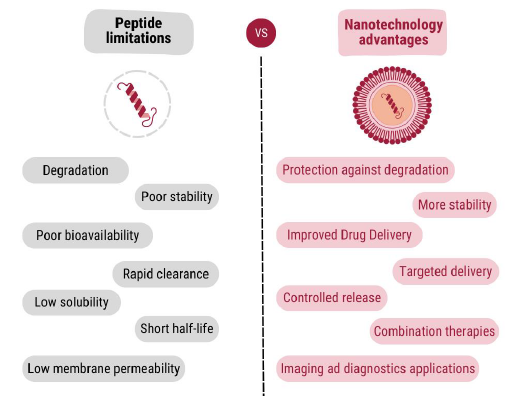
DIVERSA’s innovative Lipid Nanoemulsions for peptide applications
DIVERSA’s patented innovative drug delivery system based on lipid nanoemulsions opens new avenues of possibilities in the field. With its exceptional capabilities, this technology overcomes the challenges associated with peptide therapeutics, paving the way for enhanced efficacy and clinical translation. Their drug delivery technology offers a range of exceptional benefits for peptide applications in biomedicine.
Explore the DIVERSA product range
1. Great association efficiency
Aassociation efficiency is crucial for ensuring optimal loading and stability of peptides within the delivery system, which directly impacts their release kinetics and targeted delivery to the desired site. The DIVERSA technology can associate a wide variety of therapeutic peptides with different length, peptide charge, hydrophobicity, and isoelectric point, showing great association efficiency between 70-99% (table 1) and maintaining the nanometric size below 300 nm (Fig. 2).
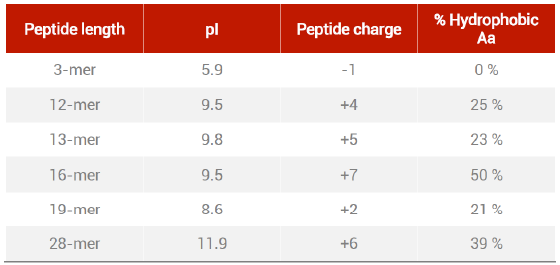
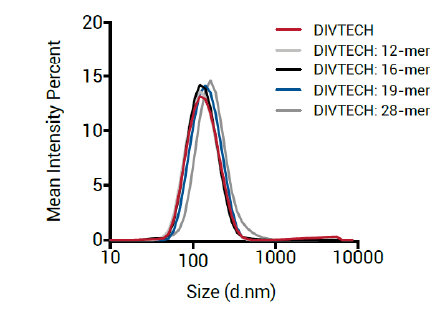
2. Enhanced Stability
Peptides are prone to degradation by proteolytic enzymes (resulting in the loss of biological activity or rapid clearance from the body) both in the gastrointestinal tract and systemic circulation, which reduces their therapeutic efficacy. From this point of view, the DIVERSA delivery technology has shown great stability in different relevant biological fluids, during storage up to 6 months in different buffers, and in culture media supplemented with FBS. The size, PdI, Zeta Potential, and the physical appearance of the peptide loaded formulations (with different length) were measured at time 0 and 24 hours later. No relevant changes in the colloidal properties were observed after 24 hours storage, showing highly stable formulation.

3. Improved Cell Internalization
The efficient internalization of peptides into target cells is crucial for achieving their desired therapeutic effects or facilitating specific cellular processes. DIVERSA Peptide Delivery Reagent can efficiently enhance cellular uptake, promote endosomal escape, enable targeted delivery, protect peptides from degradation, and facilitate intracellular release, not only in vitro, but also in vivo (Figure 3, 5).
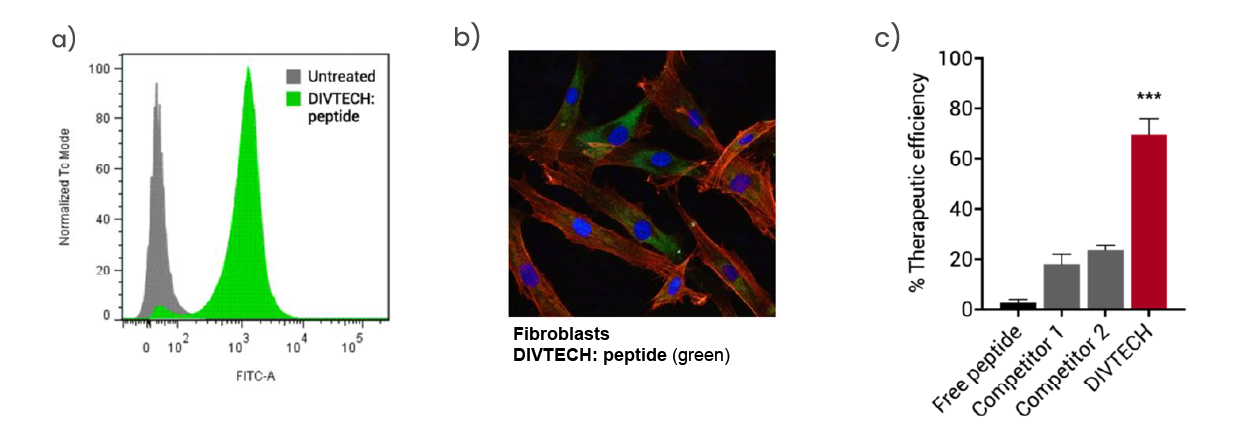
It is important to note that the internalization mechanism of DIVERSA Peptide Delivery Reagents may depend on various factors, including the composition, size, surface properties, and specific interactions with the target cells. The design and formulation of lipidic nanoemulsions can be tailored to optimize their internalization efficiency and enhance the cellular uptake of peptides for therapeutic applications.
![UV images of one representative subject of [89Zr]-peptide loaded DIVERSA (Nanotechnology)](https://www.tebubio.com/blog/wp-content/uploads/2023/11/SUV-images-of-one-representative-subject-of-89Zr-peptide-loaded-DIVERSA.webp)
4. Intellectual property protection
DIVERSA’S technology has been already protected by a patent constituting a solid foundation for future innovation. Not only provides intellectual property protection, but also differentiation, commercial value, market exclusivity, defense against competitors, and a pathway for continuous innovation. Incorporating a patented drug delivery technology into your peptide molecule you could add a unique and innovative aspect to the overall invention. This differentiation can strengthen the patentability of the peptide by demonstrating a novel approach or solution to the challenges associated with its delivery. The patented technology provides a competitive advantage by offering a distinct feature that sets it apart from other existing peptide delivery methods. Moreover, our lipid nanoemulsion drug delivery system is designed for scalability and cost-effectiveness. The manufacturing process can be efficiently scaled up to meet large-scale production demands, ensuring consistent quality and availability of the delivery system for widespread use.
Are you seeking an effective delivery strategy for your potential therapeutic peptide?
Try DIVERSA PEPTIDE DELIVERY REAGENTS
The best way make first contact with this technology is without doubt by trying the ready-to-use Delivery Reagents, specifically designed for this purpose and with a user friendly methodology. However, this does not mean that we can’t help you with any questions that you may have regarding your peptide.
Don’t hesitate to contact your local Tebubio office to order your DIVERSA Delivery Reagent, or reach out to us via the form below.
Explore the DIVERSA product range
REFERENCES
(1) Jatal, Raneem et al. “Sphingomyelin nanosystems decorated with TSP-1 derived peptide targeting senescent cells.” International journal of pharmaceutics vol. 617 (2022): 121618. doi:10.1016/j.ijpharm.2022.121618
(2) Bouzo, B.L., Lores, S., Jatal, R. et al. Sphingomyelin nanosystems loaded with uroguanylin and etoposide for treating metastatic colorectal cancer. Sci Rep 11, 17213 (2021). doi:10.1038/s41598-021-96578-z
(3) Sandra Díez-Villares, et al. “Quantitative PET tracking of intra-articularly administered 89Zr-peptide-decorated nanoemulsions”. Journal of Controlled Release. Vol 356 (2023). Pages 702-713.
doi:10.1016/j.jconrel.2023.03.025


